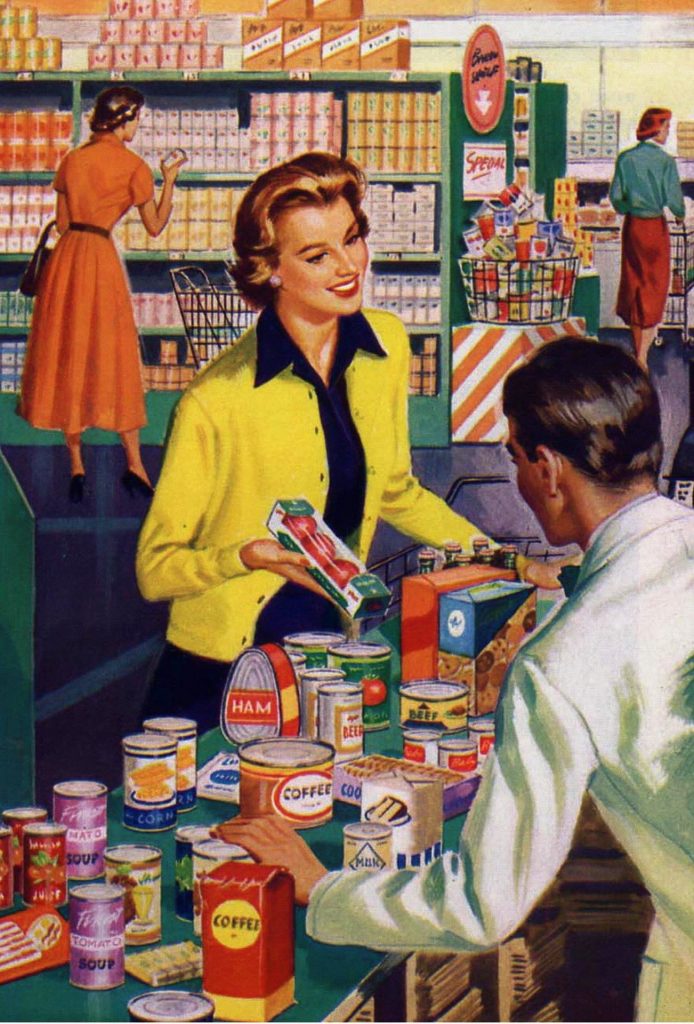Janet stood in front of the display of oranges in the grocery store, two preschoolers at her side and her youngest child contentedly sitting in the cart. As she mentally juggled her grocery list to try to get the highest priority items to fit within her family’s budget, she lamented what had happened to prices in the past few months. Orange prices had been so low last year that her family had even started buying extras to enjoy their own fresh-squeezed juice. Her husband and children had loved it. And now here she was only a year later, deciding whether she could justify purchasing even a few oranges for breakfast.
As Janet considered what might have caused this, she remembered reading that favorable weather last year had brought a bumper orange crop to the southern United States, flooding the markets with oranges. And as the supply increased, the prices decreased. But this year late frosts had decimated the orange crop to the point that stores had had trouble stocking their shelves, and prices had gone through the roof. Janet sighed and passed by the oranges, instead heading for the freezer section where she hoped frozen juices left over from last year’s crop might not have seen the same price jump yet.
Janet’s observations were simply confirming the law of supply and demand. As any desired item becomes scarce, its price goes up because there is more competition to get those few items. And when there is a surplus of an item, compared with the number of people desiring it, its price goes down.
Could it be that there’s a similar effect when the government increases the money supply? Yes! As more dollars are created (whether printed on paper or fictionalized digitally), they flood the market, and the value of each individual dollar decreases. And it’s not just the new dollars, but all dollars become devalued. Just like the bumper crop of oranges. Just like the Continentals that were printed during the Revolutionary War. And just like German marks after World War I when that country printed massive amounts of money to pay its post-war reparations.
Imagine life in Germany over the course of only three years. In January of 1921, it took 215 marks to equal one British pound. Only one year later in January 1922, it took 790. The next January it took 32,000 marks. And in January 1924, the count was 19 billion marks to equal one British pound.1 Year by year German citizens watched prices rise astronomically and saw their meager savings disappear, regardless of how much they started with.2 It all became wheelbarrow money.
But that was a long time ago, you might think. They were without computers and calculators and high-tech communications. Surely it couldn’t happen in our modern economy in the twenty-first century.
For a more recent example, consider the past few decades in Venezuela. From 1985 to 2013, inflation in Venezuela ranged from a low of 11.4% to a high of 99.9% and averaged 33.3%. Those numbers are concerning enough, but in the following years—almost one hundred years after Germany’s hyperinflation— it grew even worse: 62% (2014); 121% (2015); 255% (2016); 438% (2017); 65,374% (2018); 19,906% (2019); and finally an estimated 6,500% (2020).3
Since those numbers are hard to ponder; let’s bring it to a concrete example. Back in 1985 one Venezuelan bolivar was roughly equal to $133 US.4 Let’s say that was the amount of groceries for one family for two weeks. Ten years later in 1995, following Venezuela’s yearly inflation rates, that same amount of groceries would have required $4,020. By 2005 the cost would have been $59,881. By 2013 when inflation began to take off, those same groceries would have cost $368,298. And by 2020, two weeks’ groceries would have cost over $218 trillion.5 Any savings of money from earlier decades would have been long-since wiped out . . . regardless of how much the family had to begin with.
So what does it mean that the U.S. government is giving out trillions of dollars of new money in Covid relief? And that in 2020 we saw the largest increase (26%) in the money supply in U.S. history?6 It means every dollar in your wallet, in your bank account, and in your retirement fund is suddenly worth less. Not worthless . . . yet. But worth less than it was previously. Because the supply of dollars has been inflated, and the law of supply and demand still holds true.
Who benefits most from this “relief”? Those with no saving and no assets (because even having something that is devalued is better than having nothing). For those with some resources—including homes, vehicles, savings and investment accounts, or business equipment—careful years of toil, planning, and saving were just devalued. And every time additional money is printed, it further devalues them. That’s why even average inflation is said to cut the value of money in half every twenty years.7 This hidden tax known as inflation is planned and executed by the government and its agents (like the Federal Reserve).8 Compared to tax-and-spend programs, inflation is a slightly subtler means of transferring wealth from the “haves” to the “have nots” or (in the words of Karl Marx) from the “bourgeoisie” to the “proletariat.” In the end both are redistributive . . . and both serve the same goals.
What does this mean for Janet’s family? When Janet and her children passed by the fresh oranges and moved on to find frozen juice concentrates, they were able to exercise a choice in how to spend their family’s hard-earned dollars. They could look for other items where the supply was closer to the demand—or maybe in some cases where the supply exceeded the demand—thus yielding lower food costs for their family. However when the dollars themselves are what has flooded the market, it affects all buying and selling, not just an item here or there. Not just oranges. Not just Janet’s family.
Frankly, such policies are not enacted by a just government. Money-printing (and its resultant inflation) is a seductive means of creating an impoverished, dependent, and easily manipulated people, all while convincing them that life is good because they have more money in their pockets. More paper, yes. More value, no.
A false balance is abomination to the LORD: but a just weight is his delight.
Proverbs 11:1
Divers weights, and divers measures, both of them are alike abomination to the LORD.
Proverbs 20:10

Copyright © 2021
Notes:
1. Harold Marcuse, “Historical Dollar-to-Marks Currency Conversion Page” http://marcuse.faculty.history.ucsb.edu/projects/currency.htm
2. Wikipedia.org, “Hyperinflation in the Weimar Republic: Causes” https://en.wikipedia.org/wiki/Hyperinflation_in_the_Weimar_Republic#Causes
3. Statista.com, “Venezuela: Inflation rate from 1985 to 2022” https://www.statista.com/statistics/371895/inflation-rate-in-venezuela/
Please note that while these percentages may look like costs peaked in 2018, instead it was the inflation rate that peaked. Costs were still increasing. The cost of goods in 2019 was roughly 200 times those of 2018, and in 2020 they were estimated to be 66 times those of 2019. So while the rate of growth had slowed, even those lesser amounts of growth were enormous.
4. FxTop.com, “Historical Currency Converter with official exchange rates from 1953” https://fxtop.com/en/historical-currency-converter.php?A=1&C1=VEB&C2=USD&DD=01&MM=01&YYYY=1985&B=1&P=&I=1&btnOK=Go%21
5. Computed by author with inflation rates from https://www.statista.com/statistics/371895/inflation-rate-in-venezuela/
6. Jose Karlo Mari Tottoc, “Money Supply Is Up 26%, Inflation Coming? Cathie Wood’s Bitcoin Comments and Stock Picks” https://finance.yahoo.com/news/money-supply-26-inflation-coming-043054524.html
7. Tim McMahon,“Long Term U.S. Inflation” https://inflationdata.com/Inflation/Inflation_Rate/Long_Term_Inflation.asp
8. Joshua Hendrickson, “The Fed Changed Approach to Inflation. Will It Change Its Policies?” https://www.nationalreview.com/2021/01/average-inflation-targeting-and-this-pesky-thing-called-implementation/













